Besatzungen der ISS
![]()
ISS: Expedition 34 |
 |
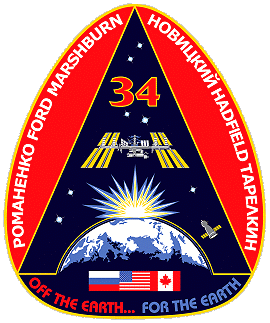 |
 |
alternatives Crewfoto |
|
alternatives Crewfoto |
|
 |
 |
![]()
Besatzung, Start- und Landedaten
| Nr. | Nation | Name | Vorname | Position | Raumschiff (Start) |
Startdatum | Startzeit | Raumschiff (Landung) |
Landedatum | Landezeit | Flugdauer | Erdorbits |
| 1 | Ford | Kevin Anthony | ISS-CDR | Sojus TMA-06M | 23.10.2012 | 10:51:10,934 UTC | Sojus TMA-06M | 16.03.2013 | 03:06:13,2 UTC | 143d 16h 15m 02s | 2233 | |
| 2 | Nowizki | Oleg Wiktorowitsch | Bordingenieur-1 | Sojus TMA-06M | 23.10.2012 | 10:51:10,934 UTC | Sojus TMA-06M | 16.03.2013 | 03:06:13,2 UTC | 143d 16h 15m 02s | 2233 | |
| 3 | Tarelkin | Jewgeni Igorjewitsch | Bordingenieur-2 | Sojus TMA-06M | 23.10.2012 | 10:51:10,934 UTC | Sojus TMA-06M | 16.03.2013 | 03:06:13,2 UTC | 143d 16h 15m 02s | 2233 | |
| 4 | Romanenko | Roman Jurjewitsch | Bordingenieur-4 | Sojus TMA-07M | 19.12.2012 | 12:12:35,340 UTC | Sojus TMA-07M | 14.05.2013 | 02:30:47,6 UTC | 145d 14h 18m 12s | 2261 | |
| 5 | Hadfield | Chris Austin | Flugingenieur-5 | Sojus TMA-07M | 19.12.2012 | 12:12:35,340 UTC | Sojus TMA-07M | 14.05.2013 | 02:30:47,6 UTC | 145d 14h 18m 12s | 2261 | |
| 6 | Marshburn | Thomas Henry "Tom" | Flugingenieur-6 | Sojus TMA-07M | 19.12.2012 | 12:12:35,340 UTC | Sojus TMA-07M | 14.05.2013 | 02:30:47,6 UTC | 145d 14h 18m 12s | 2261 |
inoffizielle Ersatzmannschaft
| Nr. | Nation | Name | Vorname | Position |
| 1 | Cassidy | Christopher John "Chris" | ISS-CDR | |
| 2 | Winogradow | Pawel Wladimirowitsch | Bordingenieur | |
| 3 | Misurkin | Alexander Alexandrowitsch | Bordingenieur | |
| 4 | Jurtschichin | Fjodor Nikolajewitsch | Bordingenieur | |
| 5 | Parmitano | Luca Salvo | Flugingenieur | |
| 6 | Nyberg | Karen Lujean | Flugingenieurin |
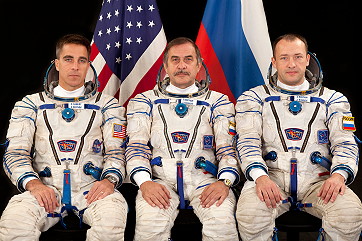 |
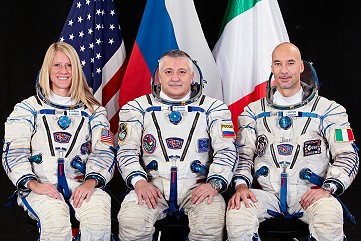 |
 |
Expeditionsverlauf
|
Start vom Kosmodrom Baikonur (Roman
Romanenko, Chris
Hadfield und Thomas
Marshburn mit
Sojus
TMA-07M). Oleg
Nowizki, Jewgeni
Tarelkin und Kevin
Ford
waren seit dem 25. Oktober 2012 an Bord der Raumstation (Ankunft mit
Sojus
TMA-06M). Die ISS Expedition 34 begann mit der Abkopplung des russischen Raumschiffs Sojus TMA-05M am 18. November 2012 um 22:26:03 UTC, das die vorhergehende Stationsbesatzung (Juri Malentschenko, Sunita Williams und Akihiko Hoshide) zurück zur Erde brachte. Am 21. Dezember 2012 wurde die Besatzung der ISS mit der Ankunft von Sojus TMA-07M wieder auf sechs Personen aufgestockt. Zur Besatzung gehörten der Russe Roman Romanenko, der kanadische Astronaut Chris Hadfield sowie der amerikanische Astronaut Thomas Marshburn. Mitte Januar 2013 fand außenbords ein weitgehend autonomes und von der Erde aus initiiertes automatisches Betankungsmanöver statt. Das dazu erforderliche Equipment der Robotic Refueling Mission war bereits im Sommer 2011 zur ISS gelangt. Während des mehrtägigen und mehrstufigen Versuchs wurden Sicherungsdrähte und Abdeckkappen entfernt, ein Einfüllstutzen ausgefahren und eine symbolische Menge Flüssigkeit übertragen. Dazu wurde die Erweiterung des kanadischen Greifarms Dextre verwendet Ende Januar 2013 wurde erstmals eine direkte Kommunikation zwischen Raumstation und einer Empfangs- und Sendeeinheit am Boden mittels Laser zur Übermittlung aktueller wissenschaftlicher Daten durchgeführt. Dabei wurde Hardware verwendet, die 2011 im Verlaufe eines Außenbordeinsatzes an der Außenhaut des Moduls Swesda installiert und zuvor im Oktober 2012 getestet wurde. Insgesamt wurden etwa 400 MByte mit Datenraten bis zu 125 MBit/s übertragen. Am 19. Februar 2013 kam es im Verlaufe einer Softwareaktualisierung und einer Umschaltung auf ein Reservesystem zu einer etwa dreistündigen Unterbrechung aller Kommunikationsmöglichkeiten zwischen Bodenstationen und dem US-basierten Segment der ISS. Einige Tage zuvor hatte ein Kabeltechniker in Russland unbedacht eine wichtige Leitung auf der Erde gekappt, über die vielfältige Informationen von russischen Satelliten zu Bodenstationen liefen. Beide Defekte waren nach wenigen Stunden repariert. Am 09. Februar 2013 wurde der Frachter Progress M-16M abgekoppelt und von der Bodenstation über dem Südpazifik gezielt zum Absturz gebracht. Die meisten Teile des Transporters sind jedoch verglüht. Der unbemannte russische Frachter Progress M-18M legte am 11. Februar 2013 um 20:35 UTC an der Internationalen Raumstation an. Er war am 11. Februar 2013 um 14:41 UTC vom Kosmodrom Baikonur gestartet. Das Transport-Raumschiff brachte etwa 346 Kilogramm Treibstoff, 50 Kilogramm Sauerstoff, 420 Kilogramm Wasser und etwa 1.360 Kilogramm Ersatzteil zur Stammbesatzung. Am 25. Juli 2013 um 20:43 UTC koppelte Progress M-18M wieder ab. Der Frachter wurde kontrolliert zum Absturz gebracht und verglühte am nächsten Tag über dem Pazifischen Ozean. Das unbemannte Raumschiff Dragon CRS-2 hob am 01. März 2013 von der Cape Canaveral Air Force Station in Florida an Bord einer SpaceX Falcon 9 Rakete ab. Kurz nach der Trennung von der zweiten Stufe der Rakete versagten drei von vier Steuerungsdüsen des Raumschiffs Dragon. Daraufhin wurde das Entfalten der Solarflächen zunächst um einige Zeit verschoben, um den Ingenieuren von SpaceX Gelegenheit zu geben, die Probleme mit den Steuerdüsen zu lösen. Erst 90 Minuten nach dem Start wurden die Solarflächen entfaltet. Später gelang es, die Steuerungsdüsen funktionsfähig zu machen. Nach einer Serie von Tests, um sicherzustellen, dass ein Rendezvous mit der ISS gefahrlos möglich ist, näherte sich Dragon der Raumstation am Morgen des 03. März 2013. Dies geschah mit einen Tag Verspätung gegenüber dem Plan. Hierdurch wurden aber keine Auswirkungen auf die Experimente erwartet. Die ISS-Crewmitglieder Kevin Ford und Thomas Marshburn fingen Dragon mit Hilfe des Roboterarms der Raumstation erfolgreich ein. Die ISS flog zu dieser Zeit über die nördliche Ukraine. Nach dem Einfangen wurde Dragon zur erdgewandten Seite des Moduls Harmony befestigt. Dragon war mit 575 Kilogramm Ausrüstungsgegenständen beladen, mit denen die Experimente auf der ISS fortgeführt werden können. Bei der Rückkehr zur Erde wurden 1210 Kilogramm wissenschaftliche Proben und Ergebnisse u.a. aus den Forschungsbereichen Biologie, Biotechnologie, Physik und Humanforschungen an Bord von Dragon transportiert. Am 26 März 2013 um 09:56 UTC wurde Dragon mit Hilfe des Greifarms der Station wieder von der ISS gelöst und auf eine eigene Umlaufbahn ausgesetzt. Nach Zündung der Bremstriebwerke wasserte die Kapsel um 15:34 UTC im Pazifik. Neue Experimente betrafen Veränderungen der Oberflächenspannung in der Schwerelosigkeit durch Beimischung verschiedener Surfactants zu Wasser (ESA-Experiment FASTER) und die Erprobung eines Microflow genannten Durchfluss-Zytometers der kanadischen Weltraumagentur CSA, mit dem Zellen und komplexe Moleküle im Blutfluss durch mehrfarbiges Laserlicht identifiziert, gezählt und kategorisiert werden können. Damit soll auch die Eignung des Gerätes als medizinisches Instrument im Weltraum überprüft werden. Nach der Übergabe des Kommandos über die Internationale Raumstation vom amerikanischen Astronauten Kevin Ford an den kanadischen Astronauten Chris Hadfield legte das Raumschiff Sojus TMA-06M am 15. März 2013 um 23:42:53 UTC mit Oleg Nowizki, Jewgeni Tarelkin und Kevin Ford an Bord von der Station ab. Die Expedition 34 der ISS war damit beendet und es begann die ISS Expedition 35. Während ihres Aufenthaltes an Bord der ISS führten die Crews der Expeditionen 33 / 34 folgende wissenschaftliche Experimente durch (vollständige Auflistung): 3DA1 Camcorder (Panasonic 3D Camera) ACE-1 (Advanced Colloids Experiment-1) AMS-02 (Alpha Magnetic Spectrometer - 02) Amine Swingbed (Amine Swingbed) Area PADLES (Area Passive Dosimeter for Life-Science Experiments in Space) BASS (Burning and Suppression of Solids) BCAT-3-4-CP (Binary Colloidal Alloy Test - 3 and 4: Critical Point) BCAT-4-Poly (Binodal Colloidal Aggregation Test - 4: Polydispersion) BCAT-5-3D-Melt (Binary Colloidal Alloy Test - 5: Three-Dimensional Melt) BCAT-5-PhaseSep (Binary Colloidal Alloy Test-5: Phase Separation) BCAT-5-Seeded Growth (Binary Colloidal Alloy Test - 5: Seeded Growth) BCAT-6-Colloidal_Disks (Binary Colloidal Alloy Test - 6 - Colloidal Disks) BCAT-6-PS-DNA (Binary Colloidal Alloy Test - 6: Polystyrene - Deoxyribonucleic Acid) BCAT-6-Phase Separation (Binary Colloidal Alloy Test - 6 - Phase Separation) BCAT-6-Seeded Growth (Binary Colloidal Alloy Test - 6: Seeded Growth) BCAT-C1 (Binary Colloidal Alloy Test - C1) BP Reg (A Simple In-flight Method to Test the Risk of Fainting on Return to Earth After Long-Duration Space Flights) BRIC-17-1 (Biological Research In Canisters-17-1: Undifferentiated Cell development in Arabidopsis plants in Microgravity) BRIC-17-2 (Biological Research in Canisters-17-2: Understanding Anoxic Response in Arabidopsis) Biological Rhythms 48hrs (The effect of long-term microgravity exposure on cardiac autonomic function by analyzing 48-hours electrocardiogram) Bisphosphonates (Bisphosphonates as a Countermeasure to Space Flight Induced Bone Loss) CARTILAGE (CARTILAGE) CCF (Capillary Channel Flow) CEO (Crew Earth Observations) CFE-2 (Capillary Flow Experiment - 2) CSI-06 (Commercial Generic Bioprocessing Apparatus Science Insert - 06) CSLM-3 (Coarsening in Solid Liquid Mixtures-3) Cell Bio Tech Demo (Cell Biology Technology Demonstration) Circadian Rhythms (Circadian Rhythms) Communications and Outreach 2-ARISS (Communications and Outreach 2 - ARISS) Communications and Outreach 2-Podcasts (Communications and Outreach 2 - Podcasts) DECLIC DSI-R (DEvice for the study of Critical LIquids and Crystallization - Directional Solidification Insert-Reflight) DECLIC HTI-R (DEvice for the study of Critical LIquids and Crystallization - High Temperature Insert-Reflight) DOSIS-3D (Dose Distribution Inside the International Space Station - 3D) DTN (Disruption Tolerant Networking for Space Operations) Dynamic Surf (Experimental Assessment of Dynamic Surface Deformation Effects in Transition to Oscillatory Thermo capillary Flow in Liquid Bridge of High Prandtl Number Fluid) ELITE-S2 (ELaboratore Immagini TElevisive - Space 2) EPO-Demos (Education Payload Operation - Demonstrations) EarthKAM (Earth Knowledge Acquired by Middle School Students) Energy (Astronaut's Energy Requirements for Long-Term Space Flight) FASTER (Facility for Absorption and Surface Tension) FLEX-2 (Flame Extinguishment Experiment - 2) Functional Task Test (Physiological Factors Contributing to Postflight Changes in Functional Performance) HREP-HICO (HICO and RAIDS Experiment Payload - Hyperspectral Imager for the Coastal Ocean) HREP-RAIDS (HICO and RAIDS Experiment Payload - Remote Atmospheric and Ionospheric Detection System (RAIDS)) Hair (Biomedical Analyses of Human Hair Exposed to a Long-term Space Flight) HiMassSEE (Spacecraft Single Event Environments at High Shielding Mass) Hicari (Growth of Homogeneous SiGe Crystals in Microgravity by the TLZ Method) ISERV (ISS SERVIR Environmental Research and Visualization System) ISSAC (International Space Station Agricultural Camera) ISS Ham Radio (International Space Station Ham Radio) Ice Crystal 2 (Crystal growth mechanisms associated with the macromolecules adsorbed at a growing interface - Microgravity effect for self-oscillatory growth - 2) InSPACE-3 (Investigating the Structure of Paramagnetic Aggregates from Colloidal Emulsions - 3) Integrated Cardiovascular (Cardiac Atrophy and Diastolic Dysfunction During and After Long Duration Spaceflight: Functional Consequences for Orthostatic Intolerance, Exercise Capability and Risk for Cardiac Arrhythmias) Intervertebral Disc Damage (Risk of Intervertebral Disc Damage after Prolonged Space Flight) J-SSOD (JEM Small Satellite Orbital Deployer) JAXA EPO 10 (JAXA Education Payload Observation 10) JAXA PCG (Japan Aerospace Exploration Agency Protein Crystal Growth) Journals (Behavioral Issues Associated with isolation and Confinement: Review and Analysis of Astronaut Journals) MAXI (Monitor of All-sky X-ray Image) MCE (Multi-mission Consolidated Equipment) MISSE-8 (Materials International Space Station Experiment - 8) MVIS Controller-1 (MVIS Controller 1) Manual Control (Assessment of Operator Proficiency Following Long-Duration Space Flight) Marangoni-Exp (Chaos, Turbulence and its Transition Process in Marangoni Convection-Exp) Marangoni-UVP (Spatio-temporal Flow Structure in Marangoni Convection) Micro-5 (Investigation of host-pathogen interactions, conserved cellular responses, and countermeasure efficacy during spaceflight using the human surrogate model Caenorhabditis elegans) Micro-6 (Genotypic and Phenotypic Responses of Candida albicans to Spaceflight) Microflow1 (Microflow 1 technology demonstration) NanoRacks-NCESSE-Antares (NanoRacks-National Center for Earth and Space Science Education-Antares) Nano Step (In-situ Observation of Growth Mechanisms of Protein Crystals and Their Perfection Under Microgravity) Neurospat (Effect of Gravitational Context on EEG Dynamics: A Study of Spatial Cognition, Novelty Processing and Sensorimotor Integration) Nutrition (Nutritional Status Assessment) ODK2 (Evaluation of Onboard Diagnostic Kit 2) Photosynth (Photosynth™ Three-Dimensional Modeling of ISS Interior and Exterior) Pro K (Dietary Intake Can Predict and Protect Against Changes in Bone Metabolism during Spaceflight and Recovery) RRM (Robotic Refueling Mission) RaDI-N-2 (RaDI-N 2 Neutron Field Study) Radiation Environment Monitor (Radiation Environment Monitor) Reaction Self Test (Psychomotor Vigilance Self Test on the International Space Station) Repository (National Aeronautics and Space Administration Biological Specimen Repository) Resist Tubule (Mechanisms of Gravity Resistance in Plants From Signal Transformation and Transduction to Response) Reversible Figures (Perspective Reversible Figures in Microgravity) Robonaut (Robonaut) SCAN Testbed (Space Communications and Navigation Testbed) SEDA-AP (Space Environment Data Acquisition Equipment - Attached Payload) SETA-2 (Solidification along a Eutectic path in Ternary Alloys-2) SMILES (Superconducting Submillimeter-Wave Limb-Emission Sounder) SNFM (Serial Network Flow Monitor) SPHERES-VERTIGO (Synchronized Position, Hold, Engage, Reorient, Experimental Satellites - VERTIGO) SPHERES-Zero-Robotics (Synchronized Position Hold, Engage, Reorient, Experimental Satellites-Zero-Robotics ) STP-H3-Canary (Space Test Program - Houston 3 - Canary) STP-H3-DISC (Space Test Program - Houston 3 - Digital Imaging Star Camera) STP-H3-MHTEX (Space Test Program - Houston 3 - Massive Heat Transfer Experiment) STP-H3-VADER (Space Test Program - Houston 3 - Variable emissivity radiator Aerogel insulation blanket Dual zone thermal control Experiment suite for Responsive space) Seedling Growth-1 (Seedling Growth-1) Solar-SOLACES (Sun Monitoring on the External Payload Facility of Columbus - SOLar Auto-Calibrating EUV/UV Spectrophotometers) SpaceDRUMS (Space Dynamically Responding Ultrasonic Matrix System) Space Headaches (Space Headaches) Spinal Ultrasound (Sonographic Astronaut Vertebral Examination) Sprint (Integrated Resistance and Aerobic Training Study) Stem Cells (Study on the Effect of Space Environment to Embryonic Stem Cells to Their Development) TechEdSat (Technology Education Satellite) Tomatosphere-III (Tomatosphere-III) Treadmill Kinematics (Biomechanical Analysis of Treadmill Exercise on the International Space Station) TriTel (3D Silicon Detector Telescope) UBNT (Ultrasonic Background Noise Test) V-C REFLEX (Plastic alteration of vestibulo-cardiovascular reflex and its countermeasure) VIABLE ISS (eValuatIon And monitoring of microBiofiLms insidE International Space Station) VIIP (Vision Impairment and Intracranial Pressure) VO2max (Evaluation of Maximal Oxygen Uptake and Submaximal Estimates of VO2max Before, During, and After Long Duration International Space Station Missions) Vascular (Cardiovascular Health Consequences of Long-Duration Space Flight) Vessel ID System (Vessel ID System) |
Aufbau der ISS
 |
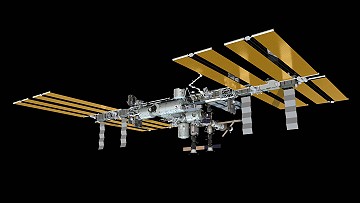 |
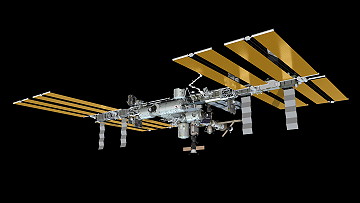 |
 |
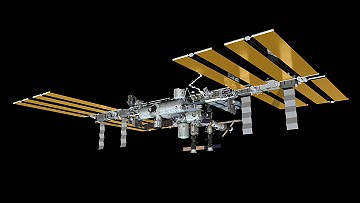 |
Fotos
 |
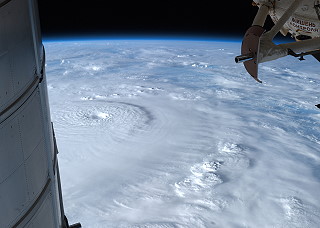 |
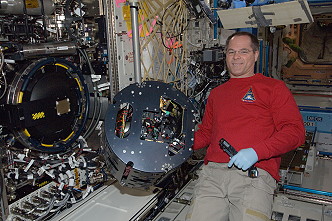 |
 |
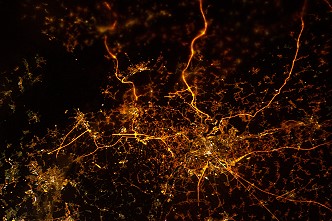 |
 |
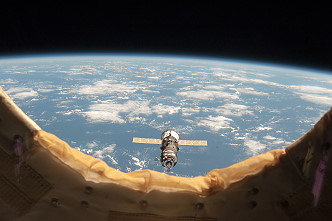 |
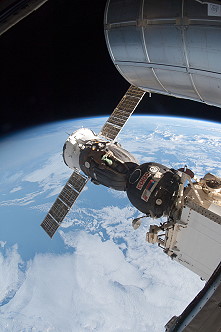 |
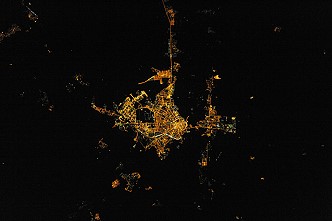 |
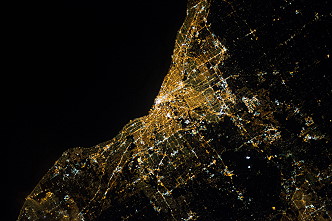 |
 |
 |
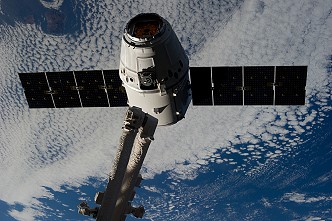 |
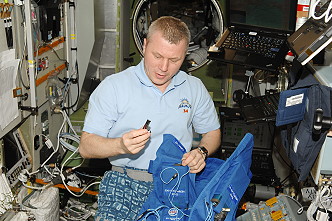 |
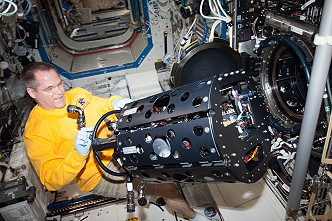 |
 |
mehr Fotos Erdbeobachtung |
|
mehr Fotos von Bord der ISS |
|
| © | 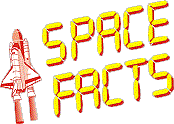 |
Letztes Update am 10. November 2023.  |
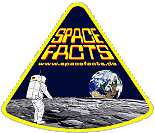 |